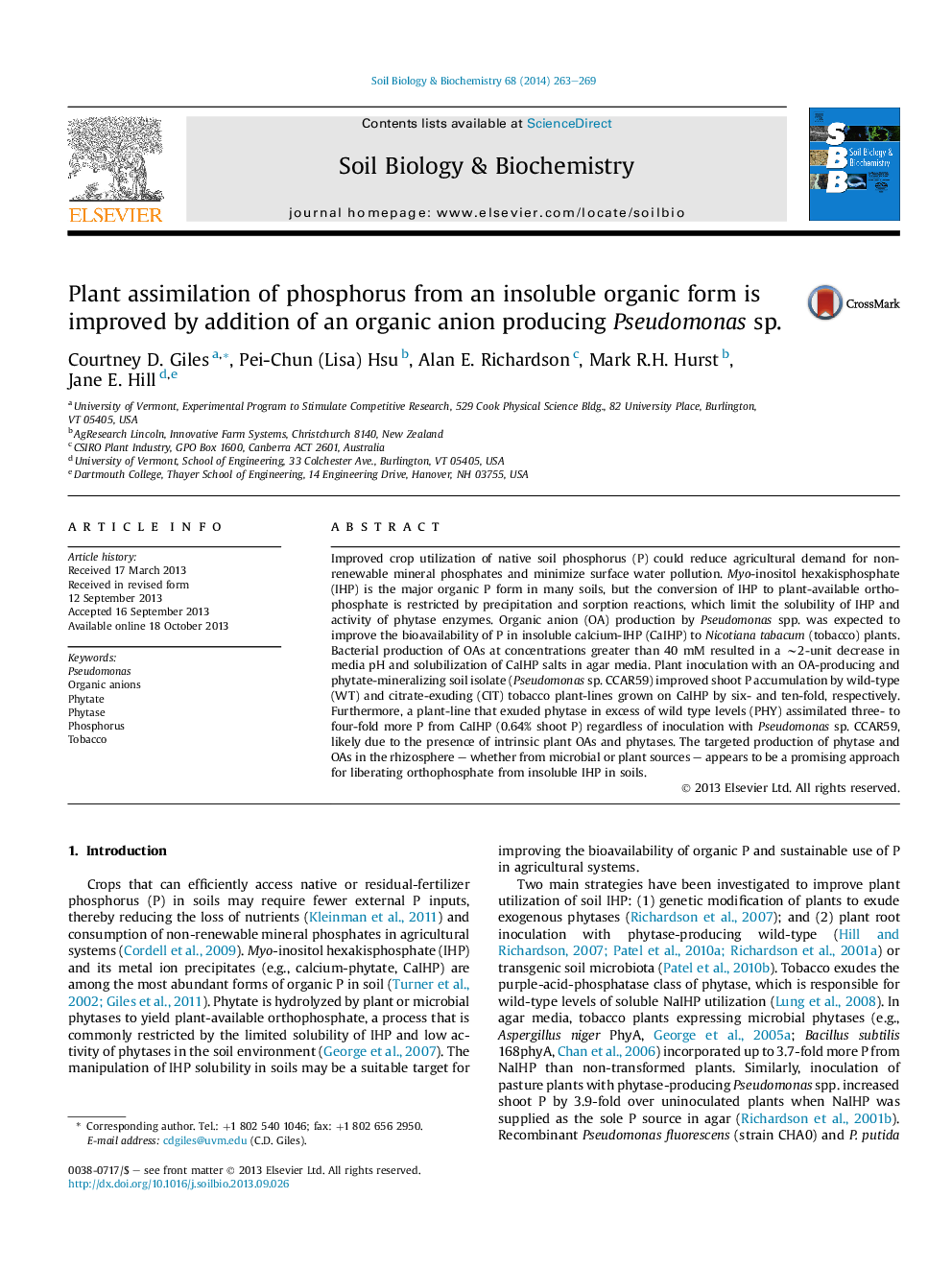| Article ID | Journal | Published Year | Pages | File Type |
|---|---|---|---|---|
| 8365085 | Soil Biology and Biochemistry | 2014 | 7 Pages |
Abstract
Improved crop utilization of native soil phosphorus (P) could reduce agricultural demand for non-renewable mineral phosphates and minimize surface water pollution. Myo-inositol hexakisphosphate (IHP) is the major organic P form in many soils, but the conversion of IHP to plant-available orthophosphate is restricted by precipitation and sorption reactions, which limit the solubility of IHP and activity of phytase enzymes. Organic anion (OA) production by Pseudomonas spp. was expected to improve the bioavailability of P in insoluble calcium-IHP (CaIHP) to Nicotiana tabacum (tobacco) plants. Bacterial production of OAs at concentrations greater than 40Â mM resulted in a â¼2-unit decrease in media pH and solubilization of CaIHP salts in agar media. Plant inoculation with an OA-producing and phytate-mineralizing soil isolate (Pseudomonas sp. CCAR59) improved shoot P accumulation by wild-type (WT) and citrate-exuding (CIT) tobacco plant-lines grown on CaIHP by six- and ten-fold, respectively. Furthermore, a plant-line that exuded phytase in excess of wild type levels (PHY) assimilated three- to four-fold more P from CaIHP (0.64% shoot P) regardless of inoculation with Pseudomonas sp. CCAR59, likely due to the presence of intrinsic plant OAs and phytases. The targeted production of phytase and OAs in the rhizosphere - whether from microbial or plant sources - appears to be a promising approach for liberating orthophosphate from insoluble IHP in soils.
Related Topics
Life Sciences
Agricultural and Biological Sciences
Soil Science
Authors
Courtney D. Giles, Pei-Chun (Lisa) Hsu, Alan E. Richardson, Mark R.H. Hurst, Jane E. Hill,
